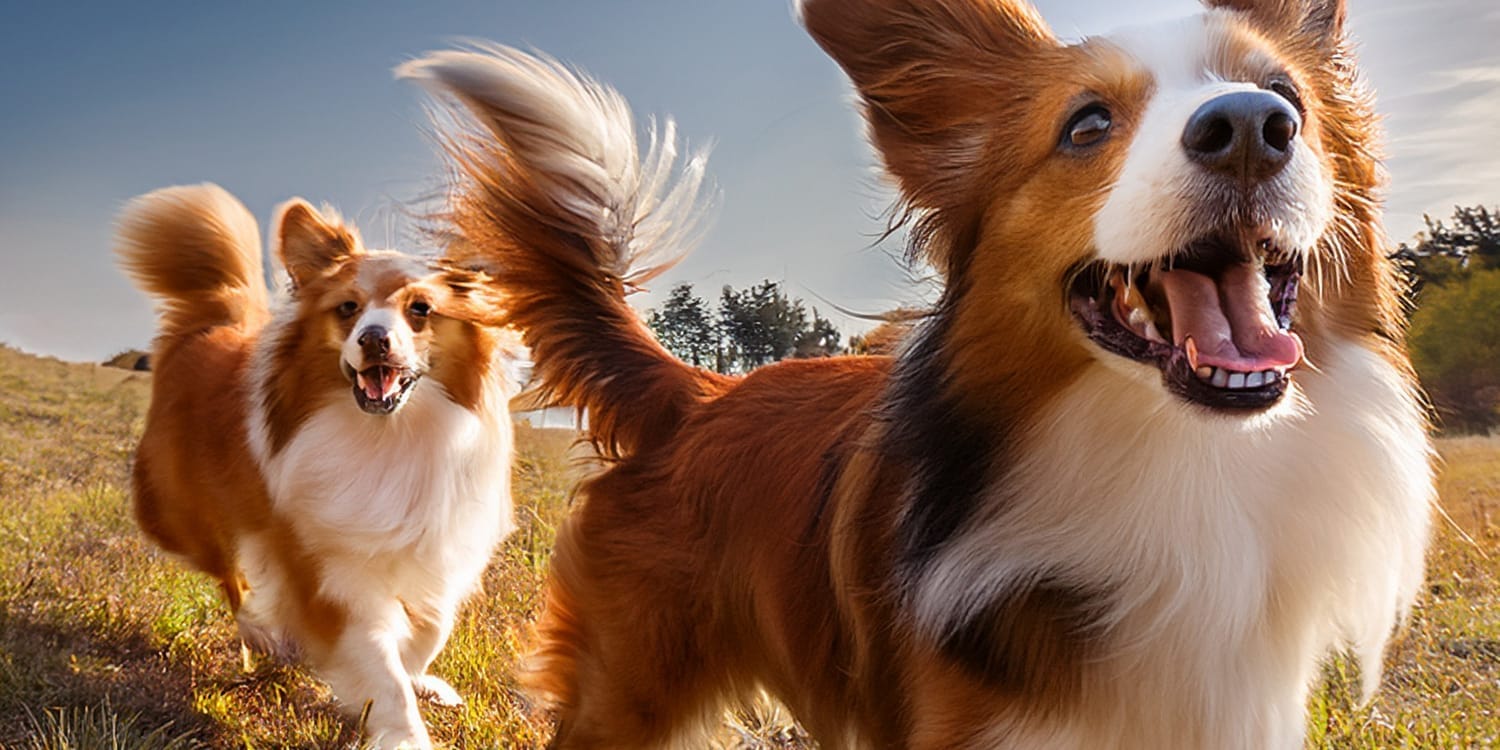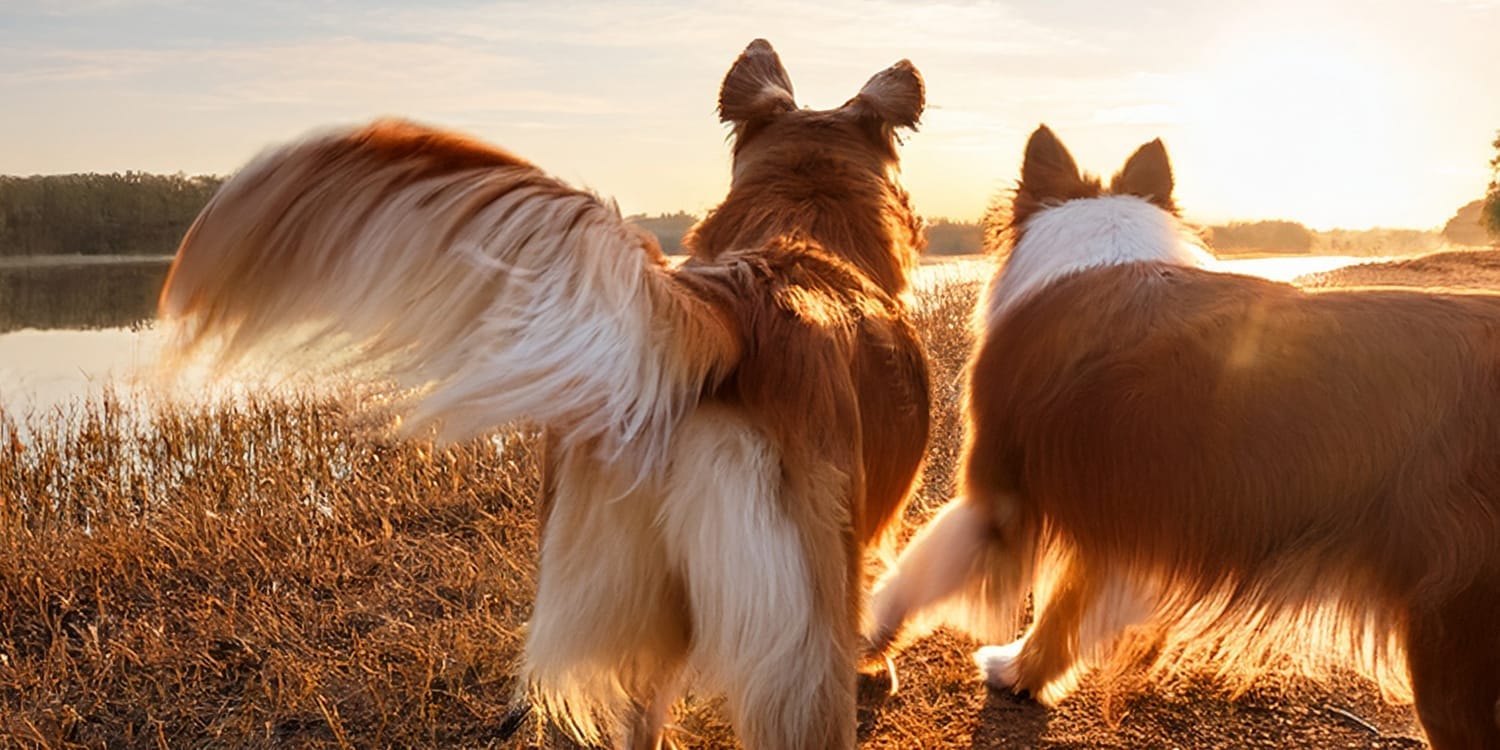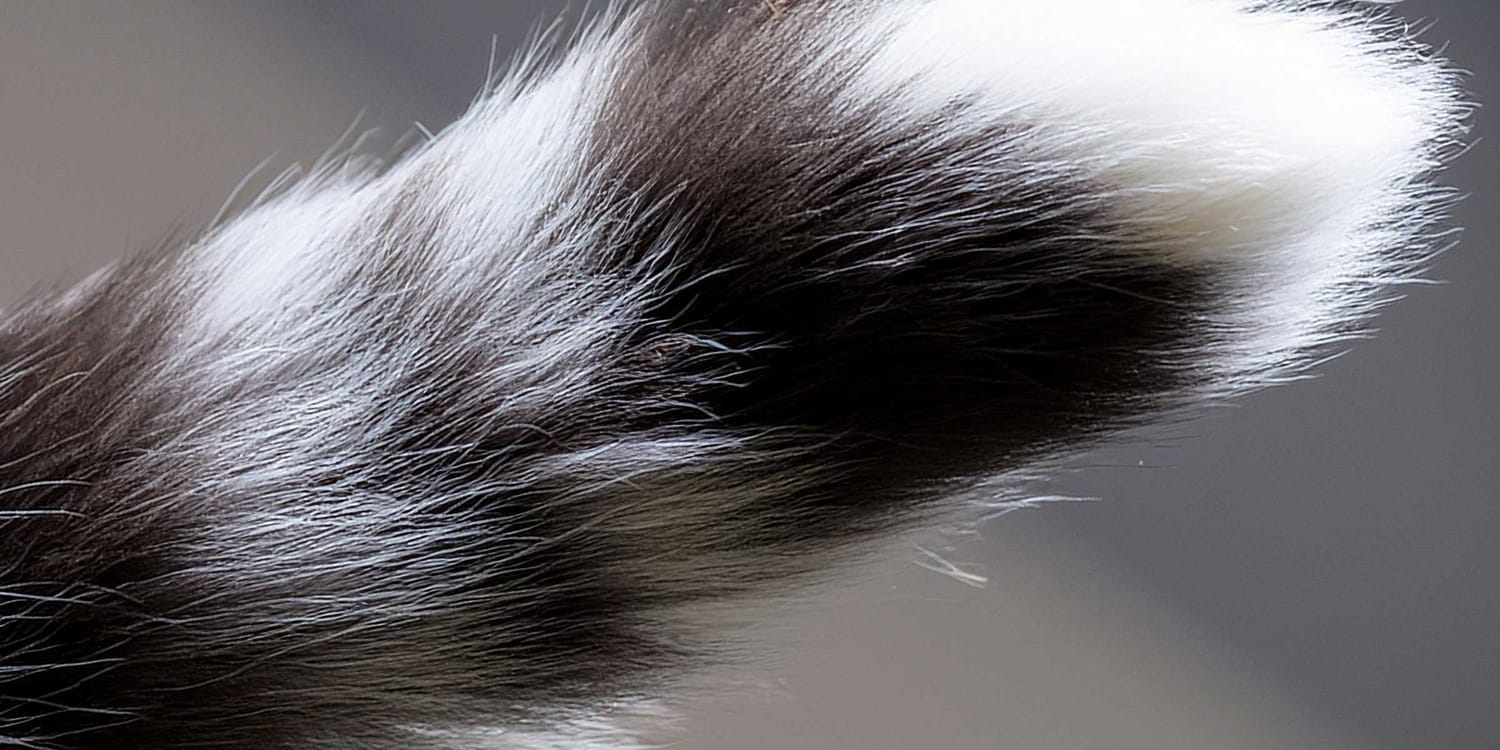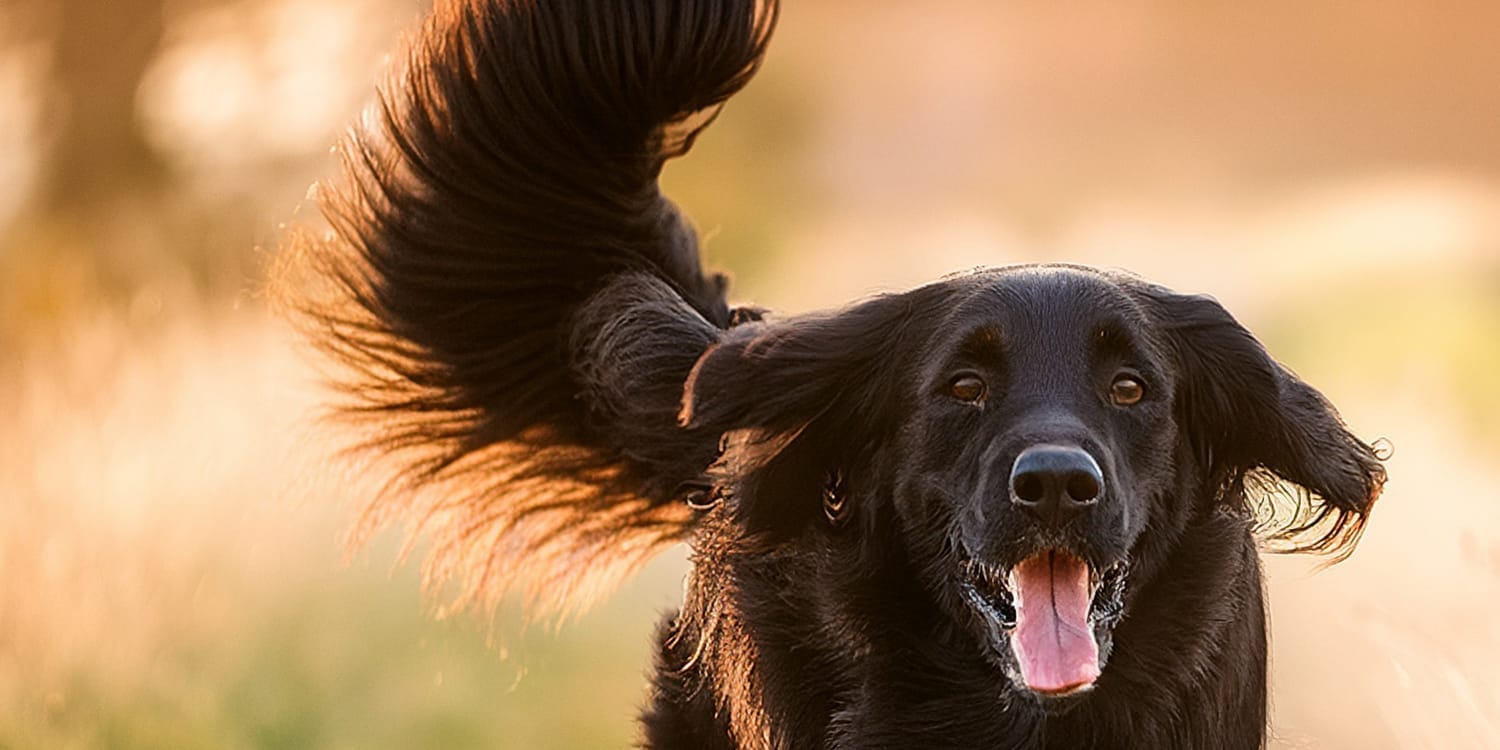What Dog Tail Wagging Really Means: The Secret Science Behind Your Pet's Communication
As an affiliate and Amazon Associate I earn from qualifying purchases at no cost to you.
Why Jax's helicopter tail and Milan's rattlesnake vibrations are more sophisticated than you think
You know that moment when your dog's tail starts going crazy and you automatically think "happy dog"?
Well, plot twist: what tail wagging really means is way more complicated than that. Scientists have discovered that our pets have been having detailed conversations with us through their tails this whole time—and most of us have been completely clueless about what they're actually saying.

🔍 What Does Dog Tail Wagging Really Mean?
The Science Behind Directional Wags
Here's where it gets really interesting. Researchers made a breakthrough discovery that completely changed how we understand tail wagging. Dogs don't just wag randomly—they wag directionally, and it means totally different things depending on which way that tail goes.
The Science:
Right-side wagging = positive emotions, friendliness, "approach" mode
Left-side wagging = negative emotions, stress, "withdrawal" mode
This happens because of brain hemisphere specialization. The left brain (controlling the right side of the body) handles positive emotions and approach behaviors, while the right brain (controlling the left side) deals with negative emotions and withdrawal responses.

Right-side wagging is a sign of positive emotions
🚁 Jax's Helicopter vs. His Guilty Slow-Mo
Now this makes SO much sense when I think about my three-legged pup, Jax. His famous helicopter tail—the one that could probably power a small aircraft—always goes to the right when he's genuinely excited to see me. It's his left brain firing up with pure "MOM'S HOME AND LIFE IS AMAZING" energy.
But that rare guilty slow wag I mentioned? The one I've only seen maybe three times because he's surprisingly well-behaved? That subtle left-side movement is his right brain kicking in with "I did something wrong and I know you're going to find out" anxiety. Even his furry adorable self can't hide the science!
👀 Other Dogs Can Read the Code Too
Here's the mind-blowing part: other dogs are fluent in this directional tail language. When researchers showed dogs videos of other dogs wagging to the left versus right, something fascinating happened.
The Results:
Dogs watching left-side wagging: heart rates increased, showed anxiety and stress
Dogs watching right-side wagging: stayed completely relaxed, some even approached the screen
It's like dogs have this built-in "friend or foe" detector based purely on tail direction. They're reading emotional states through tail language that we've been completely missing.

Left-side wagging is a sign of anxiety and stress
🐍 Milan's Rattlesnake Communication System
While this research focused on dogs, my cat Milan has his own sophisticated dinner alert system that deserves recognition. The moment I begin preparing his evening pâté, the tip of his tail transforms into a high-speed vibration device—think rattlesnake, but make it adorable.
This isn't random tail movement. This is Milan broadcasting at emergency-dinner-frequency, transmitting what he considers to be his starvation levels (though he just helped himself to a serving of kibble two hours ago). The precision timing and rattlesnake-level intensity prove that cats have mastered their own deliberate tail language.
Different species, same principle: our pets are way more sophisticated communicators than we realize—Milan just prefers the dramatic approach to get his point across.

Cats communicate using their tails, too
📖 How to Read Dog Body Language:
Your Complete Tail Translation Guide
Speed tells the story:
Fast, loose wags = pure excitement, happiness overload
Slow, controlled wags = cautious optimism, uncertainty
Tiny vibrating wags = barely contained emotion (usually the good kind)
Position reveals the plot:
High tail wag = confident, happy, "I'm the main character"
Mid-level wag = neutral, friendly, "everything's normal here"
Low wag = submissive, nervous, "please don't make me the villain"
Direction reveals emotions:
Right-side wags = positive emotions, feeling friendly
Left-side wags = negative emotions, stress, or withdrawal
And dogs without tails? That's another tale entirely—they've had to master the art of full-body communication!

High tail wag of a happy dog
🎯 Why Understanding Dog Communication Matters for Pet Parents
Understanding your pet's tail language isn't just fascinating—it's practical. Veterinarians recommend that pet parents learn to read these signals so you can:
Better read their emotional state during new situations
Recognize stress signals before they escalate
Understand their comfort level with strangers or new experiences
Appreciate the complexity of their communication system
Understanding tail language is just one part of canine communication. Read about how my rescue pup learned to tell detailed stories about his beach adventures using recordable communication buttons AND how I finally cracked his secret "ear language" code in this blog post.
🖼️ The Bigger Picture
This research reminds us that our pets are far more sophisticated communicators than we often realize. Every tail movement is intentional, every wag carries meaning, and every position tells a story about their emotional state.
So the next time you see your dog's tail wagging, take a closer look. Are they wagging to the right with genuine excitement, or to the left with uncertainty? Your pet's been writing their autobiography with their tail this whole time—now you finally have the translation guide.


📕 Every Tail Has a Tale™️
Our Pawsome Memories Journals include prompts specifically designed to help you document your pet's unique communication style and personality quirks.
For example, the prompt Describe your pet's most amusing attempt to communicate with you might get you this gem from Milan's perspective:
"When pâté preparation commences, my tail transforms into a rattlesnake—minus the rattle, plus maximum cuteness. We're talking full vibration mode broadcasting my starvation levels. Yet these dense humans have the AUDACITY to ask 'Are you hungry?' Sir, I am literally humming with starvation. Read the room!"
These journals turn everyday observations into lasting memories—and help you become fluent in your pet's unique tail language.

Fetch the Pawsome Memories Journals
Because Every Tail Has a Tale
The prompted Pawsome Memories Journals combine heartwarming reflection with playful storytelling, whether you have a furry friend, a feathered companion, or a scaly buddy.
References
Quaranta, A., Siniscalchi, M., & Vallortigara, G. (2007). Asymmetric tail-wagging responses by dogs to different emotive stimuli. Current Biology, 17(6), R199-R201.
Siniscalchi, M., Lusito, R., Vallortigara, G., & Quaranta, A. (2013). Seeing left- or right-asymmetric tail wagging produces different emotional responses in dogs. Current Biology, 23(22), 2279-2282.
Rogers, L. J., Vallortigara, G., & Andrew, R. J. (2013). Divided brains: the biology and behaviour of brain asymmetries. Cambridge University Press.
Vallortigara, G., & Rogers, L. J. (2005). Survival with an asymmetrical brain: advantages and disadvantages of cerebral lateralization. Behavioral and Brain Sciences, 28(4), 575-589.
Chen, Y., Liu, S., Zheng, Y., et al. (2022). Left-right asymmetry and attractor-like dynamics of dog's tail wagging during dog-human interactions. iScience, 25(8), 104747. doi: 10.1016/j.isci.2022.104747
FURTHER READING:
My Dog Told Me About His Beach Trip... In Detail: The Art of Dog Talking Buttons - Discover how my pup Jax learned to communicate verbally using recordable buttons, including his detailed travel reports and the secret "ear language" I missed for a whole year.
Create a "paw-fect" keepsake with your pet! Download a FREE Pawsome Greetings™ card template and transform your pet's paw prints into adorable art. Simple, fun, and perfect for any celebration!

Add a Purr-sonal Touch
to Every Occasion!

Fetch a FREE Pawsome Greetings™ Paw Print Card
Our Pawsome Greetings™ card templates make it easy to create one-of-a-kind cards your friends and family will treasure.

Hey, I'm Kelly, an artist and designer...
... and proud mom to a big, goofy three-legged dog and his feline sidekick, a tiny cat with a purr-sonality twice his size. My passion? Turning slobbery kisses and cuddles into keepsakes that’ll make you smile from ear to floppy ear. I believe in making creativity as accessible as a stroll in the dog park – no artistic pedigree required!
Privacy Policy | Terms & Conditions | Affiliate Disclosure | © StoryTail, 2025
